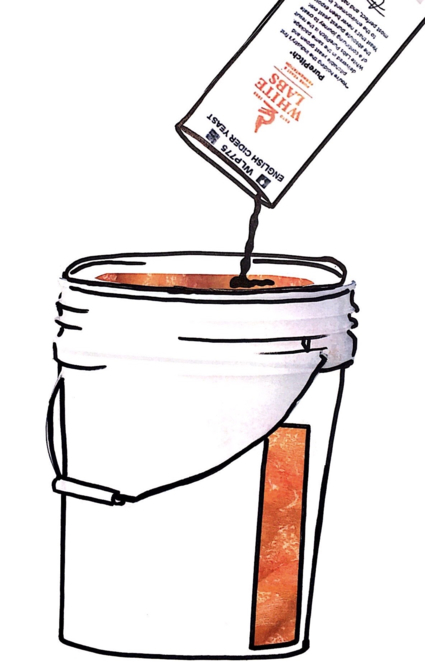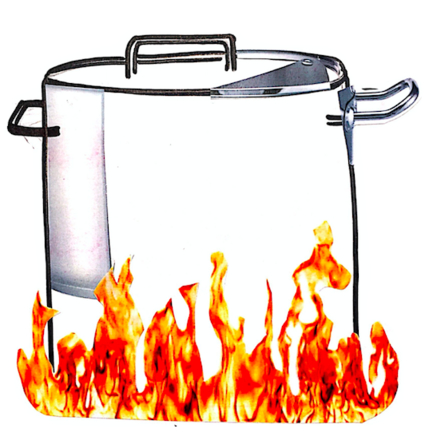First things first, a quick recap on what is vinegar: It is the result of a two stage fermentation process. During the first fermentation sugars are converted into ethanol through the actions of yeasts and on the second fermentation the ethanol is transformed into acetic acid thanks to the genus acetobacter.
or simply put, it is the result of allowing an alcoholic drink to sour.
Making vinegar is not a complex process but it does requiere some good raw materials, time and patience. Here is a quick guide on how it is done:
1. Base
Vinegar starts off with a base product or liquid, this refers to what will become vinegar. It determines the flavor and it can be based on grapes, apples, malt, strawberries, plums and more; traditionally this base tended to be fruit that when fermented produced ethanol, however nowadays the possibilities have expanded to include vegetable and spirit bases.
The fruit or vegetable of choice will be chopped, blended or juiced; the procedure of choice will depend on the ingredient's strength.
2. First Fermentation: get some Alcohol in!
The base gets yeast added to start turning the available sugars into ethanol; this kickstarts the same kind of fermentation that takes place in the making of fermented drinks (wine, beer, cider...). The yeast that is added is store bought, easy to find in brewing stores, and its type will impact the final flavors, different yeasts create different aromas and flavors.
Traditionally this stage was done through a wild fermentation* but this gives way to unexpected and variable results (sometimes good, sometimes bad) while increasing the possibilities for unwanted infections. Adding a bought yeast culture gives the brewer greater control over the process and makes a standardization possible.
During this first stage, anaerobic conditions are created: the Ph levels drop and ethanol concentrations go up. The temperature should be between 20 and 30 degrees celsius and the process should last between 10 to14 days. While it is fermenting be sure to taste on a regular basis and to stir frequently.
* Wild fermentation: this concept refers to the reliance on naturally occurring bacteria and yeast, found in the food itself or in the air, to ferment food.
3. Heat up: we gonna kill our yeast
The alcoholic fermentation process will continue until the yeasts have consumed all sugars. However, when making vinegar, residual sugars are desirable as they add flavor complexity so we want to stop the first fermentation before its done. To do it, the mix gets heated to 70ºC degrees and kept at this temperature for 15 mins.
This step is the main difference between Kombucha and Vinegar. Vinegar does not contain a living culture yeast like Kombucha does; Aged kombucha is often referred to as Kombucha vinegar for similar organoleptic profiles.
4. Second fermentation: a.k.a. oxidation
On this stage, the alcohol created during the first fermentation turns into acetic acid through a process of oxidation caused by the bacteria acetobacter. These bacteria feed off oxygen meaning aerobic conditions reappear on the surface of the liquid.
While this happens the bacteria and dead yeast come together and form a nontoxic slime known as “mother of vinegar”. This is very similar to scoby, but the difference is that this one is dead. Just like scoby in kombucha brewing, the mother vinegar can be used for starting new vinegar.
Generally speaking, at the beginning of this stage it is better to have a higher concentration of alcohol, this allows for a better yield and lower danger of contamination. However, if the alcohol concentration is greater than 18% the process will not start as the environment will have become too rough for the bacteria to thrive in. During this stage, the bigger the surface area, the better (more oxygenation).
If left to nature, this oxidative process could take months or over a year from start to finish. For that reason, backslopping and oxygenation are now common practices.
Backslopping is the addition of a previous batch of a ferment into a new one, this "contaminates" the liquid and shortens the process. Backslopping was practice done before we had starter cultures. When backslopping with vinegar you ought to use an unpasteurized one.
Oxygenation is the act of creating agitation, it can be done with machines or using an aerator. These actions bring the process down to about 15 days.
5. Vinegar at last!
The vinegar is ready when there is no alcohol taste in it. Use a PH strip to measure the final acidity of your vinegar, do not forget to taste it as the perception of acidity will be affected by the other present elements.
Others ways of making vinegar.
One-fermentation vinegar
It is possible to make vinegar quicker by setting the ideal scenario. This means that ethanol (in the form of 96% purity) and acetobacter (in the form of unpasteurized vinegar) are placed in the same liquid environment. Having this knowledge, it becomes possible to make vegetable and spirit based vinegars.
Vegetable vinegars
To make a vegetable based vinegar (elery, pumpkin, garlic...) juice it and strain it. Weigh the liquid, and add 20% of it in unpasteurized vinegar, continue by adding 8% of the new weight in the form of ethanol.
Spirit vinegars
When making spirit based vinegars one has to adapt the ethanol content to the desired level (between 8 to 18%).
Depending on the spirit in use there are two options:
- To burn the alcohol off
- To dilute it
Strong flavored alcohols (like Jagermeister) can take option 2; these will keep the flavor even after being watered down. Other alcohols, such as rum or whiskey would lose most of their taste, so in these cases the alcohol is burnt off and afterwards topped off with water and alcohol to bring the alcoholic volume to the desired one.
The trick to a nice result is to find an alcohol that will keep a nice taste after being diluted & cooked.
If you would like to see how we attempted to make vinegar
Click here to see how we made Pumpkin Vinegar
Click here to see how we made Whiskey Vinegar
Click here to see how we made Pear Vinegar

